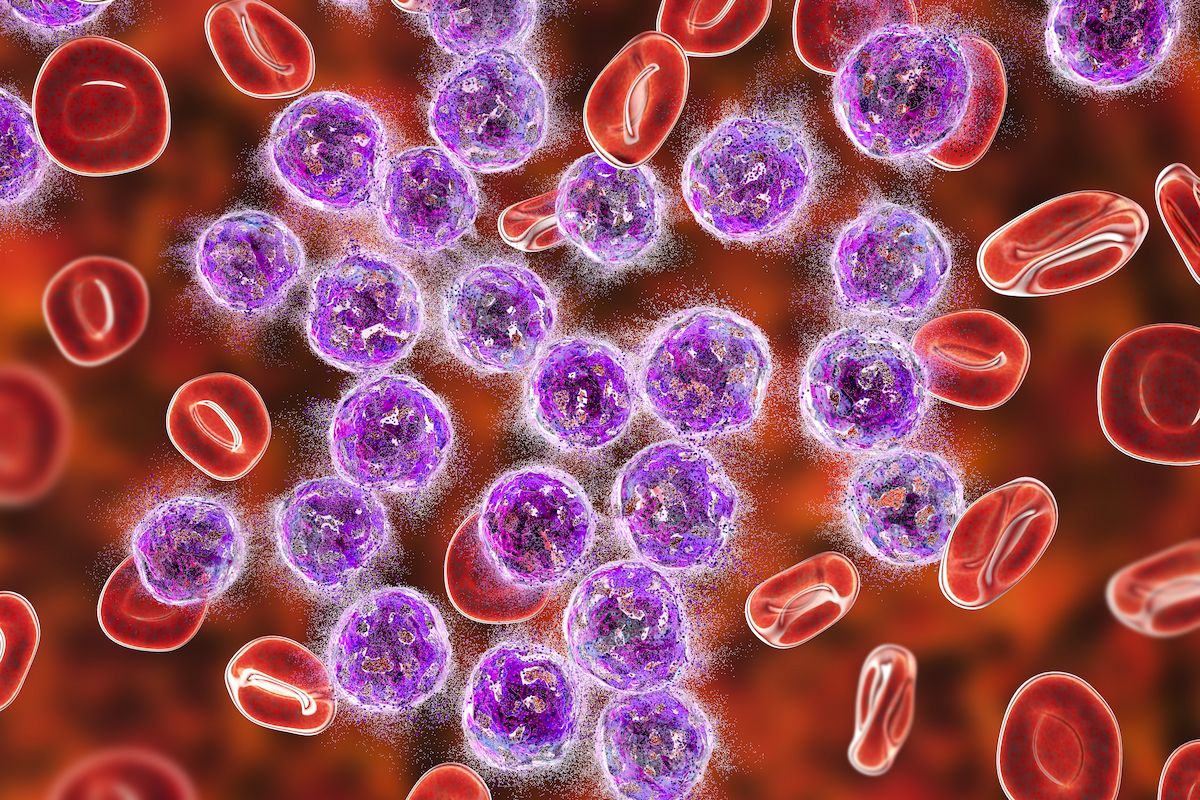Anthracyclines Improve Survival at the Expense of Home Time in AML
A SEER-Medicare database analysis of patients with AML illustrates a trade-off between survival outcomes and time spent in hospitals.
Use of anthracyclines is associated with longer survival, but less home time compared with HMA therapy due to substantial deficits in the first 6 months of treatment," Daniel Richardson, MD, MSc, MA, assistant professor of medicine in the Division of Hematology at the University of North Carolina School of Medicine, and colleagues stated in the article.

Older adult patients with acute myeloid leukemia (AML) receiving anthracycline-based therapy may see improvements in survival compared with hypomethylating agents (HMAs), but at the cost of additional time spent in hospitals, according to findings from a study published in JAMA Oncology.
In an analysis of 7946 adults with AML, 2824 (35.54%) received anthracycline-based therapy, 2542 (31.99%) received HMAs, and 2580 (32.47%) received another therapy not otherwise specified (NOS).
The median overall survival (OS) observed for all patients with AML was 8.0 (95% CI, 7.0-8.0) months. Anthracycline-based chemotherapy was associated with a median OS of 11.0 months (95% CI, 11.0-12.0), and HMA-based therapy was associated with a median OS of 8.0 months (95% CI, 7.0-8.0), with an unadjusted hazard ratio (HR) of 1.65 (95% CI, 1.55-1.75). The shortest median OS was observed in patients in the NOS group at 5.0 months (95% CI, 4.0-5.0), with an unadjusted HR of 1.71 (95% CI, 1.62-1.81). Using the Cox proportional hazards model for propensity score weighting, investigators observed a death HR of 1.37 (95% CI,1.35-1.39) for HMA-based therapy and 1.50 (95% CI,1.47-1.52) for the NOS group when compared with patients receiving anthracyclines.
The median total days at home for all patients with AML on the study was 196.0 (IQR, 92-287) days. Following propensity score weighting, the percentage of home time observed in all patients in the first year following diagnosis was 52.4%, or 189 days. Patients receiving HMA-based therapy had the highest percentage of home time at 60.8% (222 days). In the anthracycline group, the home time percentage was 51.9% (189 days), and in the NOS group, the percentage was 44.4% (162 days). Total days hospitalized far exceeded days spent in nursing facilities across all cohorts.
“These data have implications for clinical care. Use of anthracyclines is associated with longer survival, but less home time compared with HMA therapy due to substantial deficits in the first 6 months of treatment," Daniel Richardson, MD, MSc, MA, assistant professor of medicine in the Division of Hematology at the University of North Carolina School of Medicine, and colleagues stated in the article. “Oncologists and patients should both be aware of this likely trade-off when choosing intensity of therapy, and treatment decisions should be informed by patient preference for prioritizing upfront home time vs prolonging survival.”
The study was a retrospective analysis of older patients with newly diagnosed AML using the SEER-Medicare linked database from 2004 through 2016 and propensity score weighting. Patients were required to be 66 years or older and enrolled continuously in Medicare Parts A and B during the 12 months prior to and following diagnosis. Demographics and cancer features for all patients on the study were captured using data from the SEER registries.
Of the 7946 patients on the study, 4527 (56.97%) were male, and 3419 (43.03%) were female. Most (78.08%) patients were not red cell or platelet transfusion dependent. A National Cancer Institute comorbidity index of greater than or equal to 1 was seen in 54% of patients, and an index of less than 1 was noted in 46% of patients.
“This study is the first, to our knowledge, to use the SEER-Medicare data to assess home time for patients with cancer,” added Richardson and colleagues. “Subsequent studies may find it useful as a model to evaluate home time in other diseases where similar trade-offs may occur between home time and survival.”
Reference
Richardson DR, Zhou X, Reeder-Hayes K, et al. Home time among older adults with acute myeloid leukemia following chemotherapy. JAMA Oncol. 2024;10(8):1038-1046. doi:10.1001/jamaoncol.2024.1823